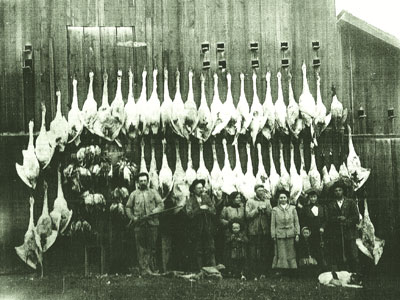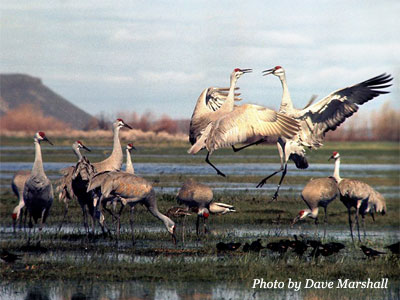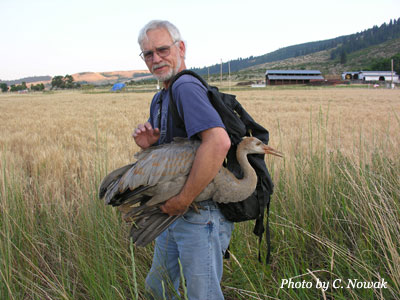
In 1908, President Teddy Roosevelt established the Malheur Lake Reservation to protect waterfowl and waterbird breeding grounds in eastern Oregon. Prior to the establishment of the reserve, local bird populations were decimated by market hunters, who shot large numbers of waterfowl for their meat and destroyed entire waterbird colonies in pursuit of feathers for fashion. Fortunately, over the past 100 years, waterbird populations have recovered in the reserve, and the now 187,000-acre Malheur National Wildlife Refuge supports the largest population of Greater Sandhill Cranes (about 250 pairs) of all national wildlife refuges. Malheur is also critically important to over a million migrant waterfowl and tens of thousands of breeding waterfowl and other waterbirds.

Malheur has taken the spotlight in the news recently – unfortunately not for its critical role in protecting wildlife, but because it has been illegally taken hostage by a group of armed extremists whose primary mission is to remove land (including Malheur) from federal ownership, preventing refuge staff from doing their good work for wildlife. I work with the International Crane Foundation as a Research Associate, focusing on conservation issues of Pacific Flyway Sandhill Cranes. I also have intimate knowledge of Malheur’s issues and challenges, as I served as the Refuge Biologist for 15 years. I also serve, voluntarily, as President of the Friends of Malheur National Wildlife Refuge, a non-profit group established to assist Malheur in meeting its mission to serve both wildlife and the public.

The illegal occupation of Malheur threatens the ability of refuge staff to provide approximately 50,000 acres of managed wetland habitat for birds (each spring the wetlands are flooded for Sandhill Cranes and other waterbirds), as well as the public’s rights to enjoy such special places. This habitat shortfall will prevent many crane pairs from nesting and greatly reduce the capacity of Malheur to support bird populations, resulting in a failure of the refuge mission. Frankly, my life has been a living hell this past month. I have been leading the Friends to provide accurate information to the public and a forum for them to express their frustrations and anxieties about the occupation of Malheur. I am also working diligently with other conservation groups to develop grassroots opposition to the refuge takeover and the anti-government/anti-public land doctrine of this movement.
It is only by working together that we can protect special places, such as Malheur, for cranes and for future generations. To get involved today, click here to learn more about the Friends of Malheur or follow us on Facebook.
Story submitted by Dr. Gary Ivey, International Crane Foundation Research Associate based in Oregon and leader of the West Coast Crane Working Group.
